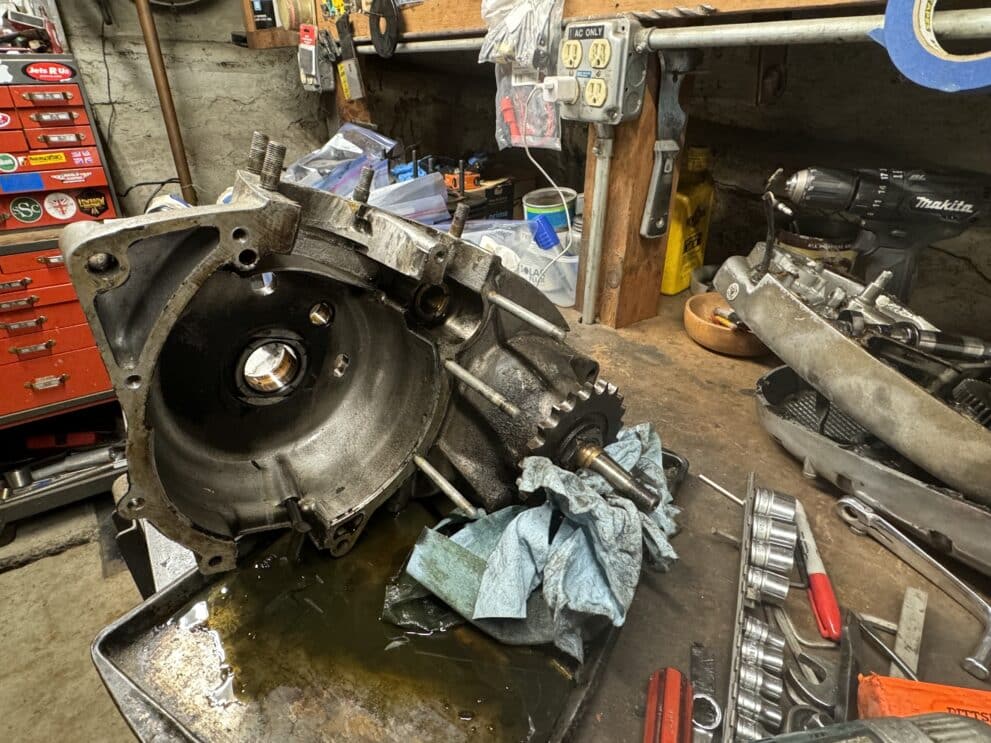
March 25, 2024
First, a quick update on the track starter I have been making. It’s now operational but has an issue we are working on. It spins beautifully. At least until we placed the Rickman on it! It could not turn over the engine. I’m using a Ford 150 Truck starter, but this being my first attempt at a remote starter, I set it up with 17 tooth sprockets on the starter and all rollers. In other words, a 1 to 1 ratio which is too much for this 12 volt motor to start an 800 cc engine with over 10.5 to 1 compression. So I purchased a 46-tooth sprocket to lower the ratio for more power. This set up would spin the engine, but too slowly so it needs an even lower ratio. I just ordered and received a 9-tooth sprocket, which I’ll weld onto the shaft of the starter motor and see if this is low enough. If a 9 to 46 ration isn’t low enough to start the bike, I’ll order an even larger hub and sprocket. Something will work eventually. But for now, this project is on the back burner as we start work on the engine. I’m glad I didn’t make a chain cover yet as its shape will change as the sprocket size changes!
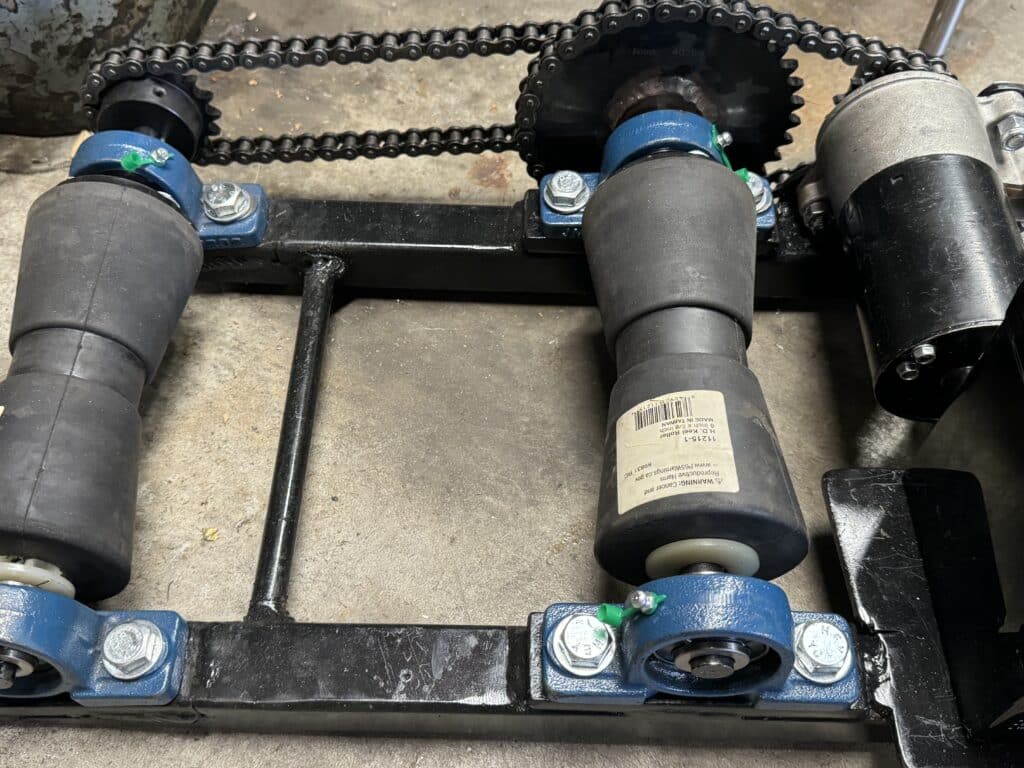
We have now torn apart the motor and are about to start on the on the machining of the cases for the right side (timing side) roller bearing modification. BSA, unlike Triumph and Norton, equipped their motors with a ball or roller bearing depending on the year, on the drive side (left) and a bushing on the right timing side. If the owner of a BSA practiced good maintenance and frequent oil changes, it could work work well for years. But with even frequent oil changes and other care, the bushed bearing was a weak point with this engine, especially when modified for more power or ridden hard. There were other factors that caused this bushing to wear out or fail. First was the oil pump itself, which was made from pot metal, and prone to wear, resulting in low oil pressure and bearing failure. A second cause of wear and potential failure was the lack of a decent oil filter or oil cooler from the factory. A third potential source of failure was an impacted clogged sludge trap, which reduced or eventually stopped the oil flow to the rod bearings, causing failure. The sludge trap is located inside the crankshaft, and cleaning it requires a complete teardown to access it. It is difficult to remove and therefore is often overlooked or passed over in a rebuild, which can be a fatal mistake for the engine down the road.
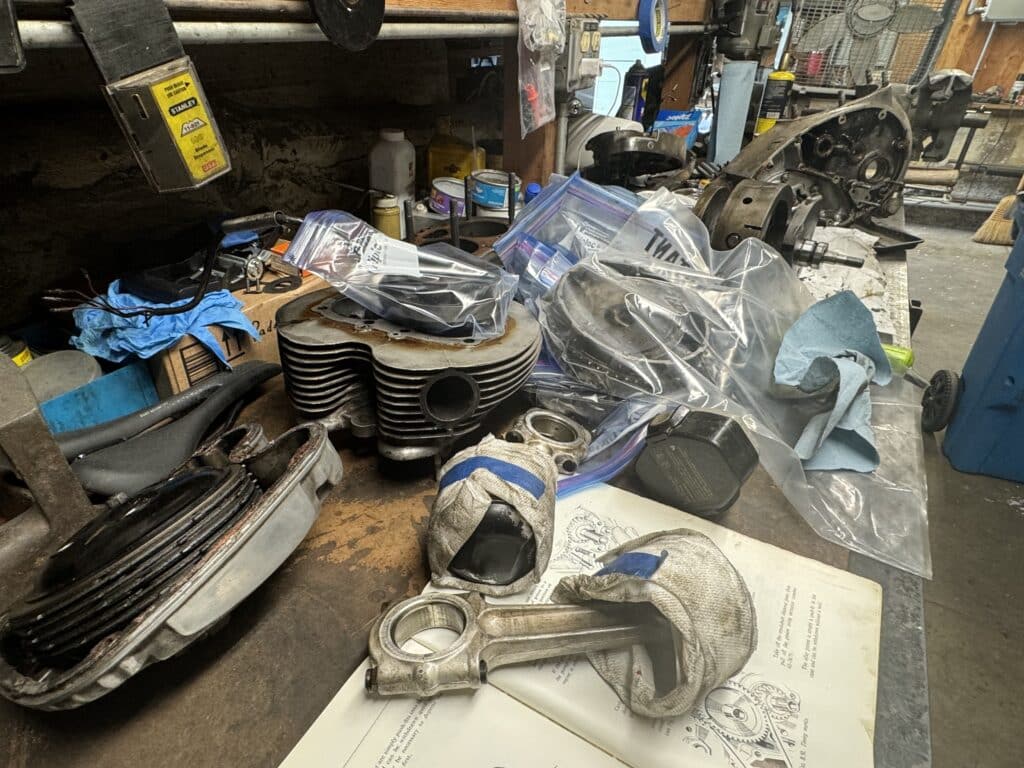
Air cooled engines can get very hot and break down oil, especially on 100-degree days, lugging around town, or hard use at high speed. Installing a third party oil filter and oil cooler addressed these issues about 50 years ago when I first installed them. I had broken the crankshaft and replaced it and at that time I installed all new bearings, cleaned out the sludge trap in the new (used) crank, and re assembled the bottom end with the proper clearances. Because of good assembly practices and good maintenance, this motor was in very good condition upon our tear down. But it also didn’t have many miles on it from its overhaul and hadn’t been started or run since 1982. Since the mid 70’s I had only ridden it on weekends in mild or warm weather, I wasn’t too surprised to find it in fairly good condition. Tearing down the engine and transmission is the dirtiest of all the jobs and we are glad it’s behind us!
Our goal is to make this bike into a real powerhouse. It will have 855 cc’s, 10-1/2 to 1 compression ratio, a hot cam, a forged billet crank, forged steel I-beam connecting rods, forged pistons, larger valves a major head porting and many other tweaks along the way. I had already modified the ignition points plate from the flimsy Lucas stock plate that made the bike hard to time and even harder to stay timed after only a few miles, and we intend to continue to use this ignition system. BSA in their race bikes (Hornets) and Triumph’s in theirs (TT Specials) both used this “Energy Transfer (ET)” system through 1967, until California law ended its use by requiring lights that would stay lit for 20 minutes if needed after the engine quit running. This called for a battery and other electrical parts. The ET ignition system got a bad rap in my opinion, precisely because of the Lucas point plate and that’s why I modified mine years ago and installed infinitely adjustable Yamaha points on top of a stiff aluminum plate. The bike became easy to start and stayed in tune for miles and miles. In reality, an ET ignition is identical to a magneto, but its components are spread out within the engine and on the frame, rather than all contained in one unit. The advantage of an ET ignition (as well as a magneto) is that the higher the revs are, the hotter the spark. Since the 1968 law won’t apply to this 1964 bike we will stay with this ignition and lighting (while running) system. We plan to use my modified ET ignition again on this build as it has been proven to be reliable and have a strong spark.

Finally, after cleaning the oil from the cases and other parts once they were apart, we got them vapor blasted to get ready for engine modifications. Shawn Campbell In Rodeo, CA did a beautiful job in making them look better than new. Shawn also welded a broken fin on the head, which was broken from before I first purchased the bike in 1965. We are now ready to start the case modifications for the timing side crank roller bearing. Eric and I have studied several methods people have used to accomplish this task, and after looking at the options from others who made this conversion, plus our own ideas, we have started in on the job. We will describe it in posts to follow, and probably do a stand alone post of this process intended for other BSA A50, A65, and A70 owners who might want to try this modification. I have to admit, that I was a little nervous at attempting this modification, but now that we have started in on it, I don’t really think it’s going to be that big of a deal. I think we were worried, mostly because there really wasn’t a COMPLETE explanation of the process to our satisfaction that we could find on line. Everything we looked at seemed to leave us with questions. Now that the cases are apart and in our hands, we can see our way from start to finish and have started the job.
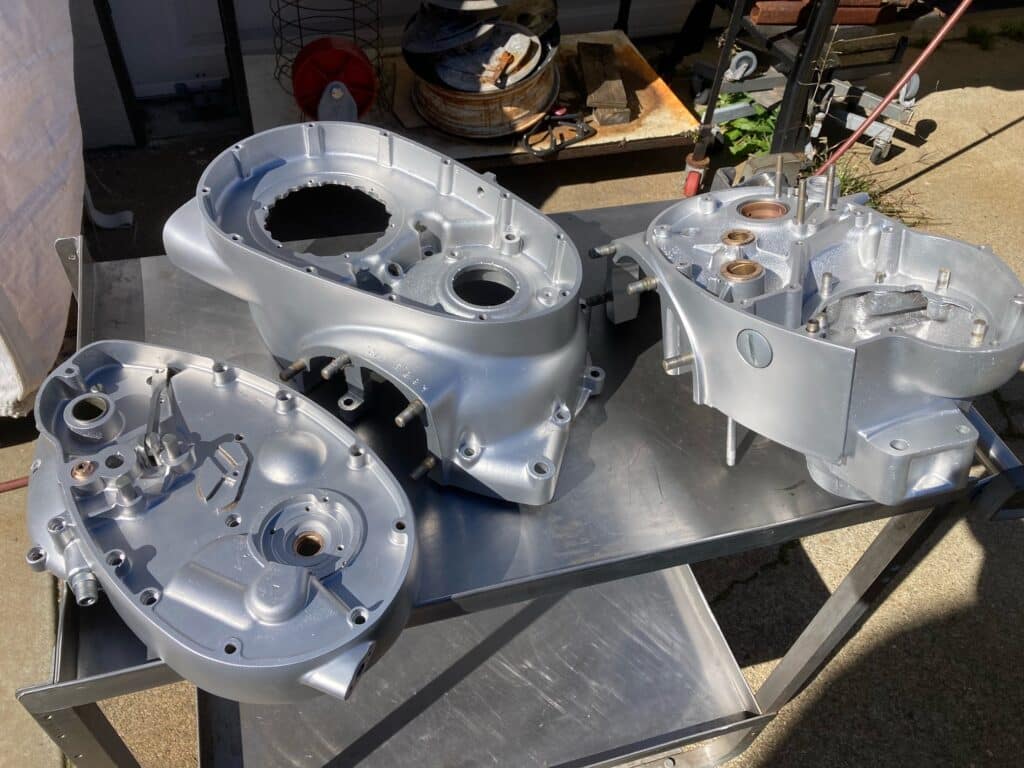
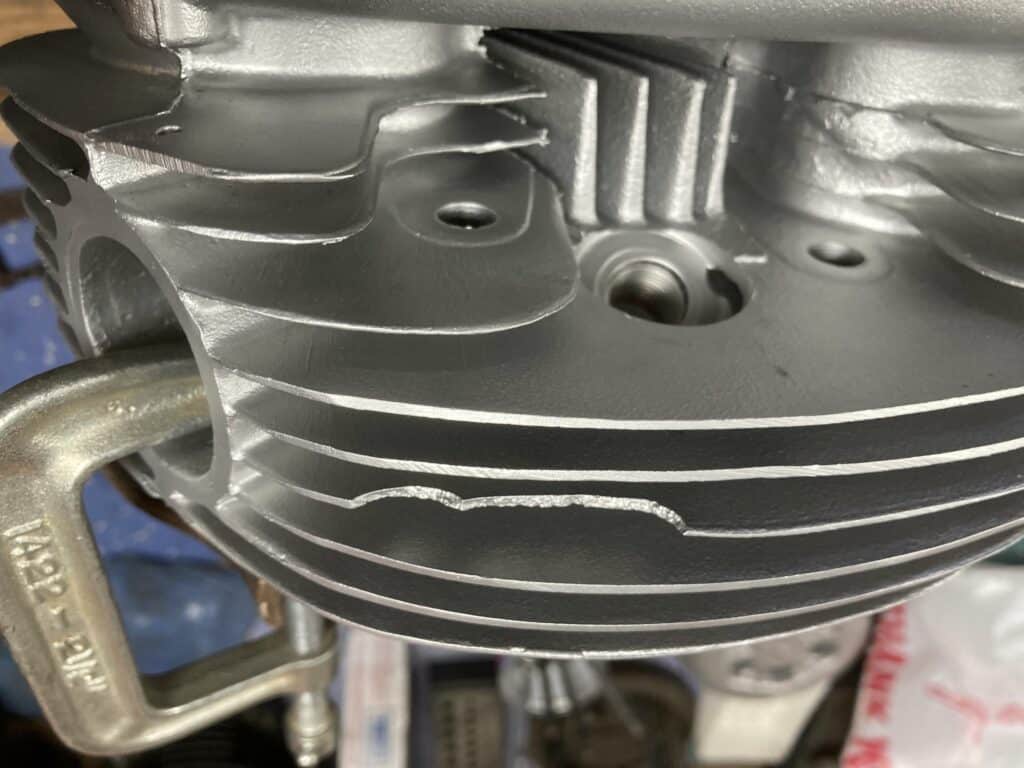
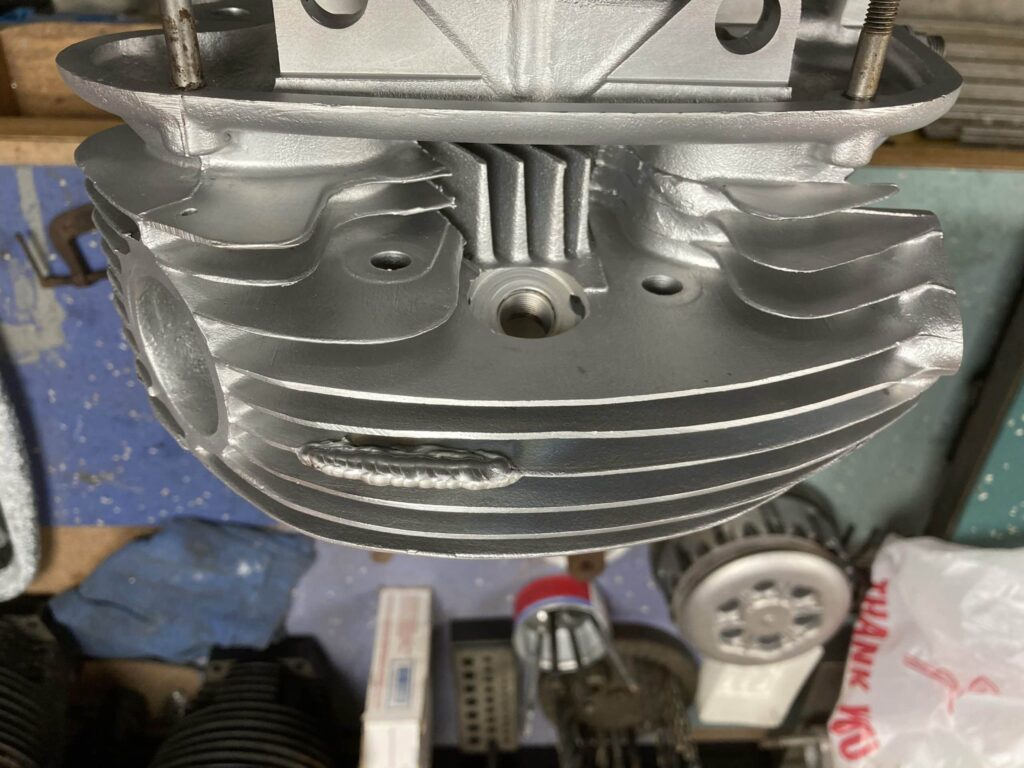
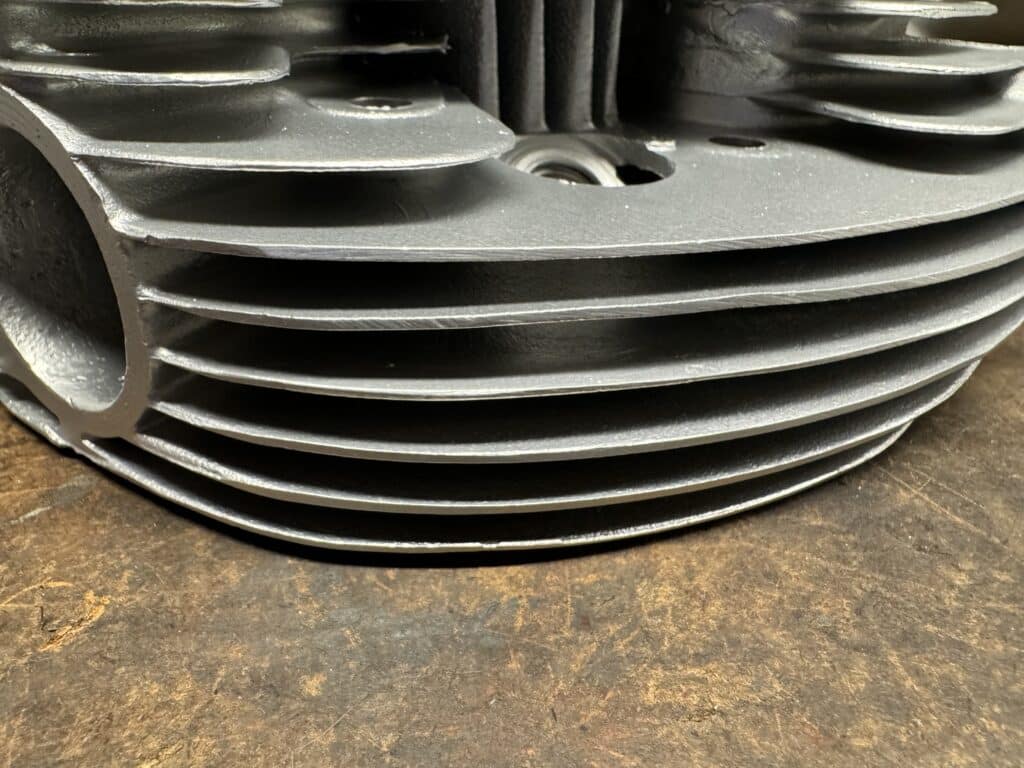

Larry, all great work you do. Never been a biker, but like your detail.
I’ve got a 1966 Volvo 122S that I bought for 1200$ to save from CA salvage that will sell for same to good new owner. Do you know anybody?
Hi Terry, Most of the people I know are into motorcycles much more than cars, but maybe someone seeing this would be interested. I always liked the style of the 122S! /Larry
Beautiful repair work on that broken cooling fin.
Love it.